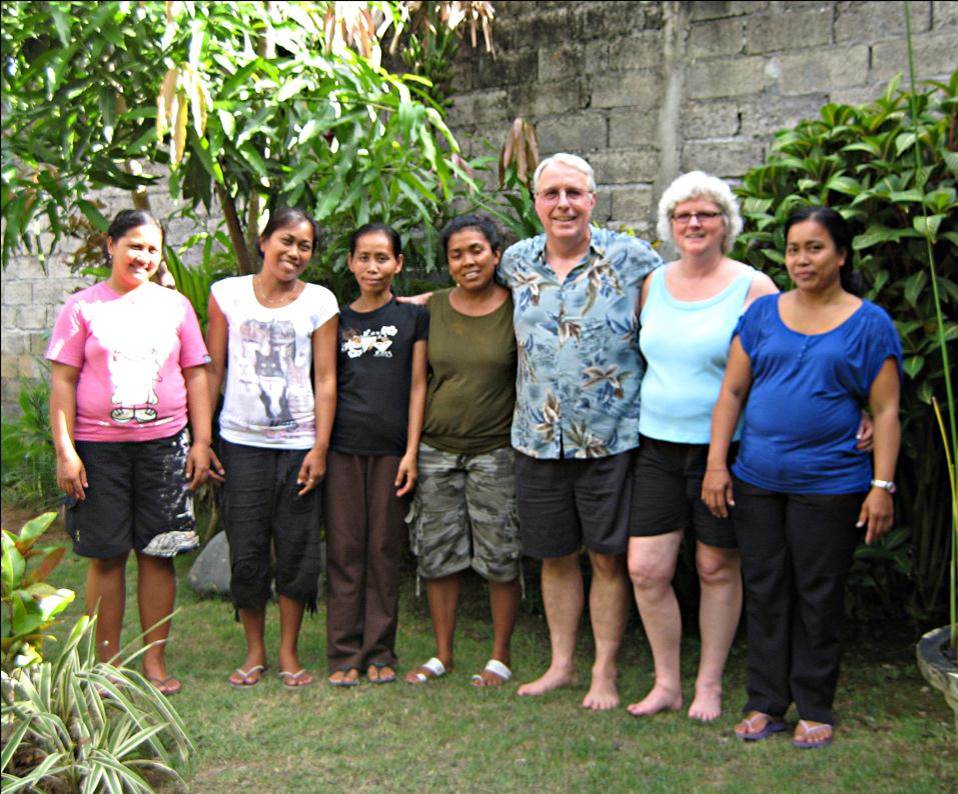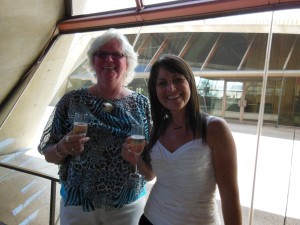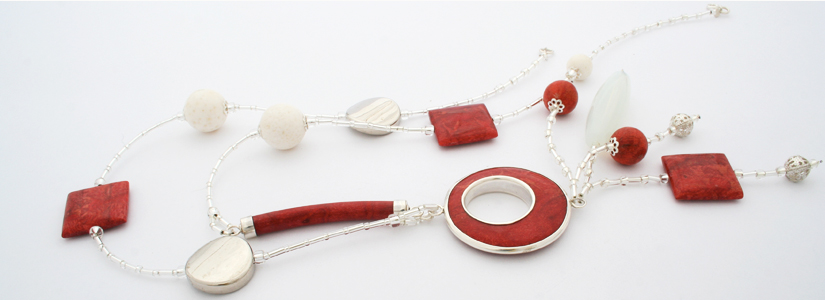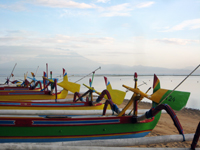ABOUT

About Jinja Jewelry
 Driven by fair-trade ethics, drawing inspiration from local and global trends, Jinja offers an eclectic collection of unique, handmade designer fashion jewelry and sterling silver jewelry. Much like the mythical Phoenix which rose from the ashes, Jinja came into being in the aftermath of the disastrous and tragic bombings in Bali in 2002. Jinja, then and now, provides income for the Balinese people who lost their jobs due to the sharp decline in tourism. What started out locally has now grown into an international business that spans the globe. We are proud to announce that Jinja products now support many families providing a safe and secure future for the people of Bali.
Driven by fair-trade ethics, drawing inspiration from local and global trends, Jinja offers an eclectic collection of unique, handmade designer fashion jewelry and sterling silver jewelry. Much like the mythical Phoenix which rose from the ashes, Jinja came into being in the aftermath of the disastrous and tragic bombings in Bali in 2002. Jinja, then and now, provides income for the Balinese people who lost their jobs due to the sharp decline in tourism. What started out locally has now grown into an international business that spans the globe. We are proud to announce that Jinja products now support many families providing a safe and secure future for the people of Bali.
 Jinja is the result of the collaborative genius of Elaine Helmig and Joy Daniels where Elaine is the heart and Joy is the soul of Jinja. Elaine works her magic offering selected customers, around the world, fantastic collections of unique Jinja Jewelry while staying sensitive to changes in fashion trends & keeping Joy in the loop with valuable insight on current jewelry fashion trends, designs & ideas. It is a perfect fit of talent and creativity and the beautiful results are readily apparent in the unique creations.
Jinja is the result of the collaborative genius of Elaine Helmig and Joy Daniels where Elaine is the heart and Joy is the soul of Jinja. Elaine works her magic offering selected customers, around the world, fantastic collections of unique Jinja Jewelry while staying sensitive to changes in fashion trends & keeping Joy in the loop with valuable insight on current jewelry fashion trends, designs & ideas. It is a perfect fit of talent and creativity and the beautiful results are readily apparent in the unique creations.
Jinja production and export are managed by a special group of our Balinese friends who make up the Jinja family – all highly skilled artisans who, under the influential eye of Australian born Joy Daniels, carefully hand make each unique piece of jewelry. While traveling the world has been Elaine’s pastime, Joy’s home for the past 20 years has been the beautiful island of Bali where she is currently employed at Bali Bintang Property. In her spare time Joy enjoys designing unique pieces of Jinja jewelry as well as mentoring her friends – the Balinese Jinja Team – in creating new jewelry designs. As evidenced on this website, the end result is beautiful, handmade jewelry, a brighter future for the Balinese, and great joy for our customers, around the world.
Explore our collection of handmade coral, silver and pearl jewelry
About Coral Jewelry

All coral is made up of calcium carbonate which, over time, builds up as the skeletal remains of tiny sea creatures’ homes in the ocean. Corals can be any number of colors, from red, white, pink and blue to the rare black. Red bamboo coral grows in branches, similar to bamboo stalks. It is matte in appearance, with small holes, scratches or cracks. It is often filled with wax to smooth imperfections.
Although there are many types of coral beads on the market the round and square flat Jinja coral beads we use in our designer creations are exclusive to Jinja.
Manmade corals are really common now and you will find a lot of red coral pieces in the market place being sold as real coral when it is not. However, the coral Jinja uses are washed up on the beaches in Java and are not taken from the reefs. We get 2 different textures to the coral, one texture gives the small lined texture, and the other gives a flower texture. These small pieces are very porous like a sponge coral, so it readily takes the dye allowing us to imitate more expensive natural corals.
The Jinja team uses dyed bamboo coral which grows in branches similar to bamboo stalks. This coral is naturally matte white or cream in color with small holes and a dark core; this is why it needs to be dyed to achieve the vibrant color.
The first process is cutting the coral roughly into the shape of the bead required by hand using a small chisel. Then the coral is shaped using an electric grinder (similar to sanding wood pieces). Following this process holes are drilled into the beads. The bead is then thoroughly dried for up to 2 weeks in the sun.
The next step is the color dying of the bead with an oil base dye. The objective is to ensure the oil can penetrate the coral as thoroughly as possible. After the dying process a further 3 days drying time is allowed. Then the beads are dipped into a resin base which gives the beautiful high gloss finish and also fills in the coral holes and removes any imperfections. Another four days drying and airing is provided and finally the last step is carefully polishing each piece to provide a beautiful luster.
Each piece of beautiful Jinja jewelry is lovingly hand crafted through a difficult and time consuming process for your wearing pleasure.
Jinja is about “People helping People.” The Jinja Family came into being following the tragic Kuta bombings of 2002. The catalyst for this effort was the sudden realization that without our help, our Balinese friends and Putu in particular, were in dire straits. Rather than allow this to happen we, along with Australian Joy Daniels, chose to ensure their future.
More facts about Indonesia and Bali:

Indonesia contains the most volcanoes of any country in the world and 76 are historically active. Significant volcanic activity occurs on Java, western Sumatra, the Sunda Islands, Halmahera Island, Sulawesi Island, Sangihe Island, and in the Banda Sea. Merapi (elev. 2,968 m), Indonesia’s most active volcano and in eruption since 2010, has been deemed a “Decade Volcano” by the International Association of Volcanology and Chemistry of the Earth’s Interior. It is considered worthy of study due to its explosive history and close proximity to human populations. Other notable historically active volcanoes include Agung, Awu, Karangetang, Krakatau (Krakatoa), Makian, Raung, and Tambora.

The national language of Indonesia is Bahasa. There are numerous local dialects in Indonesia to go along with 17,508 islands, of which only 6,000 are inhabited. Hence the reason for Bahasa Indonesia, a modified form of Malay, serving as a unifying language. English is also spoken, along with Dutch, and, as mentioned numerous local dialects, of which the most widely spoken is Javanese.
The population of Indonesia is approximately 245 million as of July 2011. The religious makeup of Indonesia is predominately Muslim 86.1%, with Protestant 5.7%, Roman Catholic 3%, Hindu 1.8%, and other or unspecified accounting for the remainder according to the 2000 census.
Bali’s Sunset
Where Indonesia is primarily Muslim the majority of Balinese are Hindus with almost three million living on the “Island of the Gods.” Bali has occupied a place in seagoing tales and travel folklore long before Bob Hope and Bing Crosby produced the Road to Bali movie. The name recalls a certain magic, and the longer one stays, the more you fall in love with the gentle Balinese People and the gentle and fertile climate of the island. Indeed, Balinese society is incredibly vibrant and alive, while retaining its ancient roots. The island is located approximately 8 degrees south of the equator between Java and Lombok. It is quite small, with an area of approximately 2,175 sq. miles. The mushroom shaped island measures 55 miles from north to south, and 90 miles from west to east. Bali contains six volcanoes from 3,300 ft to 9,000 ft high, with pristine lakes, fast flowing rivers, deep ravines, picturesque rice terraces, and incredibly verdant jungle. The volcanoes are quite prominent, dominated by Mt. Agung, 9,000 ft high, having last erupted in 1963. Other volcanoes are Abang and Batur. There are quite dramatic lava flows on the northeastern slopes of Aguna as well.
North Bali’s western shore, the coral reefs and clear water of Menjangan Island are a diving and snorkeling paradise. Equally blessed, are the spectacularly beautiful coral formations and clear waters surrounding Lemboggan Island to the east.
Come to Bali, and see for yourself why it is called “The Island of the Gods.” Experience firsthand the ways and customs of a gentle people. You will fall in love with the island and its people. We did.
